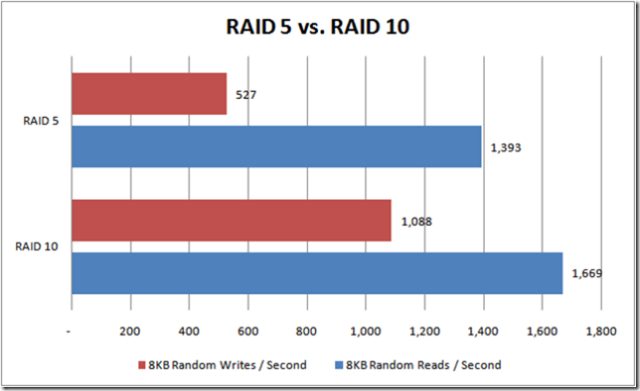RAID 10 generally outperforms RAID 1 in real-world scenarios, offering better combined read/write speeds and higher fault tolerance due to its combination of mirroring and striping.
RAID 1 is a simple mirroring setup where data is duplicated exactly on two or more disks, providing excellent read performance (potentially up to the sum of all disks' read speeds) but write speeds are limited to that of a single disk since data must be written to all mirrors. It offers full redundancy but only half the total raw capacity is usable because of mirroring.
RAID 10 (also called RAID 1+0) combines mirroring and striping: data is striped across mirrored pairs. This configuration improves both read and write performance compared to RAID 1 alone because striping distributes data across multiple disks, allowing parallel read/write operations. It also provides full redundancy, allowing continued operation even if one disk in each mirrored pair fails. However, like RAID 1, RAID 10 sacrifices 50% of raw capacity due to mirroring.
Performance Benchmarks and Real-World Use:
-
Read Performance: RAID 10 can deliver faster read speeds than RAID 1 because it stripes data across multiple mirrored pairs, enabling parallel reads from multiple disks. RAID 1 read speed can scale with the number of disks but is generally less efficient than RAID 10’s striping plus mirroring.
-
Write Performance: RAID 10 typically outperforms RAID 1 in write operations because striping allows data to be written in parallel across multiple disks, whereas RAID 1 must write the same data to all mirrored disks, limiting write speed to the slowest disk.
-
Fault Tolerance: RAID 10 offers higher fault tolerance than RAID 1. RAID 1 can tolerate the failure of one disk, but RAID 10 can tolerate multiple disk failures as long as no mirrored pair loses all its disks. This makes RAID 10 more reliable in environments where uptime is critical.
-
Recovery Time: RAID 10 has faster recovery times after disk failure compared to parity-based RAID levels because it simply copies data from the mirror rather than recalculating parity. RAID 1 also benefits from fast recovery due to mirroring but lacks the performance boost of striping.
-
Capacity: Both RAID 1 and RAID 10 have a 50% capacity overhead due to mirroring, meaning usable storage is half the total raw disk capacity.
Summary Table:
| Aspect | RAID 1 | RAID 10 |
|---|---|---|
| Data Protection | Mirroring (full redundancy) | Mirroring + Striping (full redundancy) |
| Read Speed | Up to sum of disks (mirrored) | Higher due to striping + mirroring |
| Write Speed | Limited to slowest disk | Faster due to striping |
| Fault Tolerance | Can tolerate 1 disk failure | Can tolerate multiple failures if not in same mirrored pair |
| Capacity Overhead | 50% (mirroring) | 50% (mirroring) |
| Recovery Speed | Fast (mirror copy) | Fast (mirror copy) |
In real-world applications, RAID 10 is preferred over RAID 1 when both performance and fault tolerance are critical, such as in database servers, virtualization hosts, and high-transaction environments. RAID 1 is simpler and may be suitable for smaller setups prioritizing redundancy with moderate performance needs.
Therefore, RAID 10 offers superior performance benchmarks compared to RAID 1 in practical use cases, especially for write-intensive workloads and environments requiring high availability.




















WebSeoSG offers the highest quality website traffic services in Singapore. We provide a variety of traffic services for our clients, including website traffic, desktop traffic, mobile traffic, Google traffic, search traffic, eCommerce traffic, YouTube traffic, and TikTok traffic. Our website boasts a 100% customer satisfaction rate, so you can confidently purchase large amounts of SEO traffic online. For just 40 SGD per month, you can immediately increase website traffic, improve SEO performance, and boost sales!
Having trouble choosing a traffic package? Contact us, and our staff will assist you.
Free consultation